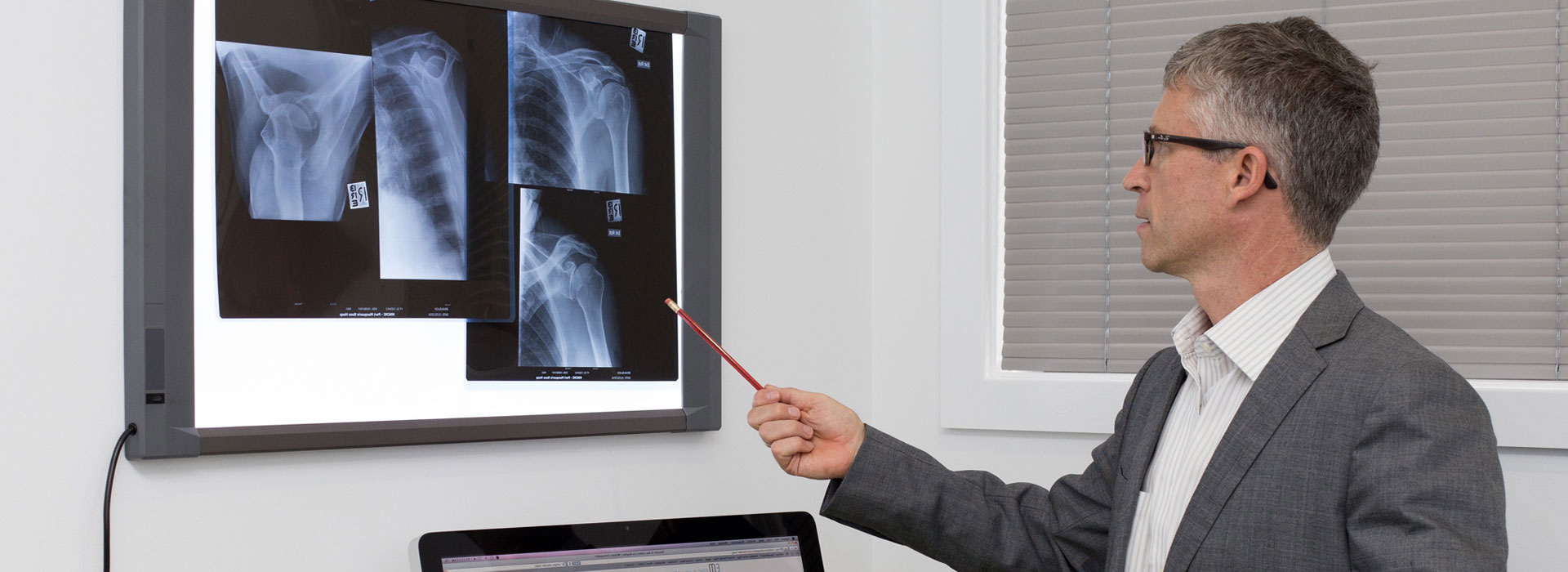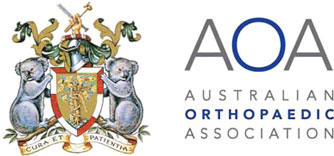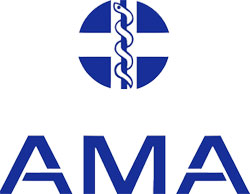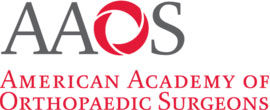Description
Although most people think of the shoulder as a single joint, there are really two joints in the area of the shoulder. One is located where the collarbone (clavicle) meets the tip of the shoulder bone (acromion). This is called the acromioclavicular or AC joint. The junction of the upper arm bone (humerus) with the shoulder blade (scapula) is called the glenohumeral joint. Both joints may be affected by arthritis.
To provide you with effective treatment, your physician will need to determine which joint is affected and what type of arthritis you have. Three major types of arthritis generally affect the shoulder.
Osteoarthritis: or “wear-and-tear” arthritis, is a degenerative condition that destroys the smooth outer covering (articular cartilage) of bone. It usually affects people over 50 years of age and is more common in the AC joint than in the glenohumeral shoulder joint.
Rheumatoid arthritis: is a systemic inflammatory condition of the joint lining. It can affect people of any age and usually affects multiple joints on both sides of the body.
Post traumatic arthritis: is a systemic inflammatory condition of the joint lining. It can affect people of any age and usually affects multiple joints on both sides of the body.
Signs and Symptoms
The most common symptom of arthritis of the shoulder is pain, which is aggravated by activity and progressively worsens. If the glenohumeral shoulder joint is affected, the pain is centered in the back of the shoulder and may intensify with changes in the weather. The pain of arthritis in the AC joint is focused on the front of the shoulder. Someone with rheumatoid arthritis may have pain in all these areas if both shoulder joints are affected.
Limited motion is another symptom. It may become more difficult to lift your arm to comb your hair or reach up to a shelf. You may hear a clicking or snapping sound (crepitus) as you move your shoulder.
As the disease progresses, any movement of the shoulder causes pain, night pain is common and sleeping may be difficult.
Diagnosis
A physical examination and X-Rays are needed to properly diagnose arthritis of the shoulder. During the physical examination, your physician will look for:
- Weakness (atrophy) in the muscles
- Tenderness to touch
- Extent of passive (assisted) and active (self-directed) range of motion
- Any signs of injury to the muscles, tendons and ligaments surrounding the joint as well as signs of previous injuries.
- Involvement of other joints (an indication of rheumatoid arthritis)
- Crepitus with movement
- Pain when pressure is placed on the joint, X-rays of an arthritic shoulder show a narrowing of the joint space, changes in the bone and the formation of bone spurs (osteophytes). If an injection of a local anaesthetic into the joint temporarily relieves the pain, the diagnosis is confirmed.
Treatment
As with other arthritic conditions, initial treatment of arthritis of the shoulder is conservative:
- Weakness (atrophy) in the muscles
- Tenderness to touch
- Extent of passive (assisted) and active (self-directed) range of motion
- Any signs of injury to the muscles, tendons and ligaments surrounding the joint as well as signs of previous injuries.
- Involvement of other joints (an indication of rheumatoid arthritis)
If conservative treatment does not reduce pain, there are surgical options. As with all surgeries, there are some risks and possible complications. Your orthopaedic surgeon will do all that is possible to minimise these risks.
Arthritis of the glenohumeral joint can be treated by replacing the entire shoulder joint with a prosthesis (total shoulder arthroplasty) or by replacing the head of the upper arm bone (hemiarthroplasty). The most common surgical procedure used to treat arthritis of the AC joint is a resection arthroplasty. In this procedure, a small piece of bone from the end of the collarbone is removed, leaving a space that later fills with scar tissue. Surgical treatment of arthritis of the shoulder is generally very effective in reducing pain and restoring motion.







